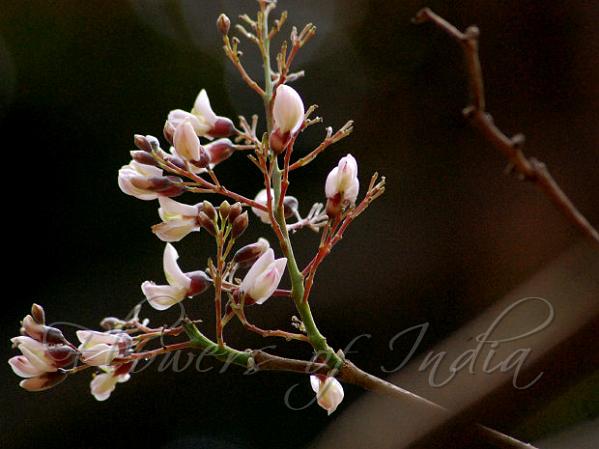|
| Florida Fish-Poison Tree |
|

|

| File size | 81421 |
| Original date | 4/11/12 2:20 PM |
| Resolution | 620 x 465 |
| Flash | Flash did not fire |
| Focal length | 300.0mm |
| Exposure time | 1/500s |
| Aperture | 8.0 |
| Focus Distance | |
| Metering Mode | Center weighted average |
| Camera make | NIKON CORPORATION |
| Camera model | NIKON D40 |
| Sensor type | OneChipColorArea |
|
|
|
|
Photo: |
Botanical name: Piscidia piscipula Family: Fabaceae (Pea family)
Synonyms: Erythrina piscipula, Robinia alata, Piscidia toxicaria
Synonyms: Erythrina piscipula, Robinia alata, Piscidia toxicaria
Florida fishpoison tree is a medium-sized,
deciduous, tropical tree endemic to southern Florida, the Florida Keys,
Texas, Caribbean, and Latin America. The tree attains medium size with
heights of 12 to 15 m and bole diameters of 46 to 118 cm. An irregular,
open crown develops with stout, erect branches. Stem bark is thin and
olive gray in color with irregular dark patches and many smaller
scales. Its deciduous leaves, 9-23 cm long, are alternate and pinnately
compound. Leaflets are 5-11, each 4-8 cm long, oppositely arranged.
Leaflets are dark green above and distinctly paler grayish-green below
with pubescence. The white flowers are tinged with red or pink. They
appear in pea-like clusters in May and are attractive to bees. Trees
will potentially bloom when about 4 m tall and 4 years old. Flowers
develop into a light brown, bean-like pod, 8-to 10 cm long, with four
papery wings. Flowering: April-May.
Medicinal uses:  Florida Fish-Poison Tree can be toxic and should only be used under
direction of a doctor. It has been used in traditional medicine for
treating nervous conditions and pain. Recent scientific studies in
animals suggest that bark extracts may have potential for their
anti-inflammatory, sedative, and anti-spasmodic effects.
Florida Fish-Poison Tree can be toxic and should only be used under
direction of a doctor. It has been used in traditional medicine for
treating nervous conditions and pain. Recent scientific studies in
animals suggest that bark extracts may have potential for their
anti-inflammatory, sedative, and anti-spasmodic effects.
 Florida Fish-Poison Tree can be toxic and should only be used under
direction of a doctor. It has been used in traditional medicine for
treating nervous conditions and pain. Recent scientific studies in
animals suggest that bark extracts may have potential for their
anti-inflammatory, sedative, and anti-spasmodic effects.
Florida Fish-Poison Tree can be toxic and should only be used under
direction of a doctor. It has been used in traditional medicine for
treating nervous conditions and pain. Recent scientific studies in
animals suggest that bark extracts may have potential for their
anti-inflammatory, sedative, and anti-spasmodic effects. Identification credit: Jayesh Patil
| Photographed in Veer jijamata Udyan, Mumbai. |